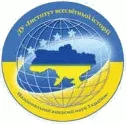Шведська традиція державної опіки над культурною спадщиною
##plugins.themes.bootstrap3.article.main##
Анотація
Скандинавські країни відрізняються тим, що в них з досить давніх-давен застосовувалася розумна система піклування про пам’ятки старовини. Тут не було «законів» в точному сенсі – їх замінювали численні королівські декрети. Виданий у 1886 році декрет короля Швеції щодо покровительства та охорони пам’яток старовини переслідував ті ж цілі, що й звичайний парламентський акт про пам’ятники. Швеція, таким чином, перебувала в особливо щасливому положенні в тому сенсі, що тут вже здавна держава прийняла на себе охорону всіх старовинних пам’яток країни, причому було встановлено принцип, за яким пам’ятники та предмети, відкриті розкопками на приватній землі, не надходили в розпорядження власника, а складали предмет опіки держави. Наприкінці ХІХ ст. було неможливо встановити подібний принцип шляхом прямого законодавства, але в Швеції це було наслідком традиційного звичаю, що принесло пам’ятникам та їх охороні незліченну користь. В зв’язку з цим шведське законодавство в сфері охорони культурної спадщини вважається найстарішим у світі. Традиція державної опіки над історичними пам’ятками налічує вже близько чотирьох століть. На зорі цієї традиції у XVII та на початку XVIII століть відбувалося становлення централізованої шведської держави з великими імперськими амбіціями, важливу роль в обґрунтуванні яких грало історичне надбання.
Друга половина XIX ст. стала поворотним моментом у справі охорони пам’яток, результатом чого стає Декрет 1867 р., який двічі доповнювався у 1873 та 1886 рр. В ньому відображено тенденції професіоналізації та централізації охорони пам’яток. Декретом було ускладнено механізм узгодження знесення пам’ятників в процесі господарських робіт. Був уточнений механізм надання права на дослідження археологічної спадщини. В цілому прогресивність шведських норм до початку ХХ ст. не може не викликати захоплення, хоча законодавство про охорону пам’яток повністю складалося з королівських розпоряджень. Комплексний закон з охорони пам'яток в Швеції був прийнятий тільки у 1942 р.
Завантаження
##plugins.themes.bootstrap3.article.details##
Посилання
Baldwin-Brown, G. (1905). The care of Ancient Monuments. Cambridge: University Press. [In English].
Zirman, N. (2017). Pravovyye osnovy okhrany arkheologicheskogo i istoricheskogo naslediya FRG. Istoriya i sovremennost. Byulleten Instituta istorii materialnoy kultury Rossiyskoy Akademii nauk: (okhrannaya arkheologiya). 6. р. 201-216. [In Russian].
Dolff-Bonekaemper, G. (1985). Die Entdeckung des Mittelalters. Studien zur Geschichte der Denkmalerfassung und des Denkmalschutzes in Hessen-Kassel bzw. Kurhessen im 18. und 19. Jahrhundert. Marburg. Selbstverlag der Hessischen Historischen Kommission Darmstadt und der Historischen Kommission für Hessen. [In German].
Tolstikov, A.V. (2008). “Shvedskost” kak “gotskost”: shvedskiy gotitsizm XV-XVII vv. Shvedy: sushchnost i metamorfozy identichnosti. р. 59-76. [In Russian].
Hammer, F. (1995) Die geschichtliche Entwicklung des Denkmalrechts in Deutschland. Tübingen: J.C.B. Mohr. [In German].
Malyshev, O.O. (2015). Istorychnyi rozvytok zakonodavstva Shvetsii z pytan okhorony arkheolohichnoi spadshchyny (XVII– ХХІ st.). Pravova derzhava. 26. р. 43-52. [In Ukranian].
Tolstikov, A.V. (2007). Anatomiya istorii Ulofa Ryudbeka. Odissey. Chelovek v istorii. р. 169-189. [In Russian].
Onopriyenko, V.I. (2014). Uppsalskiy universitet. Veka istorii. Dostizheniya. Lichnosti. Kiyev: Informatsionno-analiticheskoye agentstvo. [In Russian].
Popecheniye o pamyatnikakh stariny v yevropeyskikh gosudarstvakh (1907) (Perevod P. Latysheva knigi Baldwin-Brown G. The care of Anciyent Monuments. Cambridge: University Press, 1905). Izvestiya Imperatorskoy Arkheologicheskoy Komissii. 22. р. 91-144. [In Russian].

